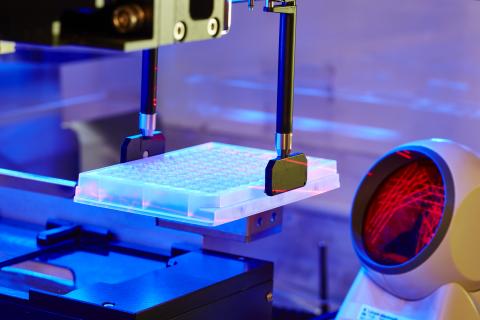After new findings from Anthony Nolan’s Patient/Donor project have been published, Jonathan from our Patient Services team looks at how new technology is helping us understand what the best possible match now looks like, and what this means for future patients.
At Anthony Nolan, we use our stem cell register of over 700,000 people to match individuals willing to donate their stem cells, to people with blood cancer and blood disorders who need lifesaving transplants.
How the matching process works
Matching is based on our human leukocyte antigen (HLA) tissue type - this forms part of our genetic characteristic that makes us all unique individuals. We look at five HLA genes (called HLA-A, -B, -C, -DRB1 and -DQB1), each of which has two versions (called alleles) - one inherited from your mother and one from your father, making 10 in total.
When it comes to finding a match, the higher the number of matching alleles the better. But we know that sometimes a perfect match isn’t always successful, and sometimes other matches are.
It’s clear that we don’t know everything just yet, but we are continually improving the way we analyse HLA genes and expanding our knowledge about what makes the perfect match. And this includes an exciting new development in recent years.
Revolutionary technology
Anthony Nolan’s ultra high-resolution sequencing technique, what we call Third Generation Sequencing (TGS), has revolutionised how we look at HLA genes. It’s also allowed us to confirm the importance of other genes, including a sixth HLA gene (called HLA-DPB1), when looking for the perfect match. TGS technology allows our scientists to analyse DNA in more detail than ever before. In the past, we have only been able to focus on regions of the six major HLA genes that were the most variable and so believed to be the most important when finding a match.
But we now have the potential to read every single DNA base that makes up these genes, With the improved resolution of TGS and its ability to read much longer DNA strands, we are beginning to discover the importance of other regions of these genes too. This means we can be more confident at identifying the key mismatches between stem cell recipients and potential donors.
But has investment in this technology been worthwhile? Just how beneficial will it be for people that will need us to find them a stem cell donor in the future? This is where our Patient/Donor project comes in.
Introducing: The Patient/Donor Project
For over 20 years, Anthony Nolan has been collecting DNA samples from stem cell recipients and their matched donors. The project now has over 2,500 pairs of samples from more than 40 UK transplant centres.
In collaboration with the British Society for Blood and Marrow Transplantation (BSBMT), we have collected clinical data over this period to see which matches were more successful and which ones caused complications such as graft versus host disease (GvHD) and relapse.
Nearly 900 paired donor and recipient DNA samples have been re-analysed using TGS to see if the new technology can provide better insight into why some matches were more successful.
In a quarter of cases, TGS revealed mis-matches between the donor and recipient that were not seen when the match was first made. This is because it can look at the DNA in much more detail.
A new understanding of a perfect match
This study focused on the patients that were originally given a perfect match – a 12/12 score for all six HLA genes, which also includes DPB1. After TGS analysis, those patients that still had a perfect score were approximately twice as likely to be alive after five years compared to those that were now 10/10, but had certain mismatches in DPB1.
The study confirmed previous findings that some DPB1 mismatches can have a better outcome for patients than others. Similarly, the 12/12 patients were less likely to experience serious complications in the 12 months post-transplant. Patients with mismatches in DPB1 were also twice as likely to develop acute GvHD after their transplant.
Importantly, this new TGS data has been combined with other factors that we know can influence transplant success. This included matching the patients and donors for cytomegalovirus (CMV) status – a very common virus that causes few complications in healthy individuals. This improved the probability of patient survival by threefold, when compared to patients with a 10/10 score and CMV mismatch.
What does it mean for the future?
This study demonstrates the essential need for all stem cell recipients and potential donors to be HLA typed using ultra high-resolution sequencing techniques. Dr Neema Mayor, Head of Immunogenetics Research at Anthony Nolan, commented that ‘Matching in this way means we will be able to minimise the risk of complications such as graft-versus-host disease and, consequently, the risk of mortality – potentially saving more lives.’
These promising results now need to be validated in new, larger sample sets that are independent from those of our Patient/Donor project.
However, the findings have the potential to revolutionise the way that stem cell recipients and donors are matched across the world.
Dr Mayor has said: ‘There is a lot to celebrate, however, long term survival rates remain unacceptably low, which will keep driving us forward with further research. Our commitment to saving lives determines our research agenda, and we will continue to ensure findings are reflected in clinical practice and decision-making.’
If you’re going through a stem cell transplant and would like more information or support, our Patient Services team are here to help. Visit anthonynolan.org/patients
